#Reflection Symmetrical Artwork Project
Explore tagged Tumblr posts
Text

📺 Kaleidoscope Visuals - Colorful Visuals
Digital kaleidoscope art is a creative medium that uses the principles of kaleidoscopes to create visually stunning and intricate patterns. It is a versatile tool that can be used for a variety of purposes, from decorative images to illustrative art.
#Kaleidoscope Visuals Colorful Visuals#kaleidoscopeart#kaleidoscopevisual#kaleidoscopevisuals#visualart#visualgraphics#abstractart#abstractdesign#digitaldesign#digitalart#digitalartwork#geometricart#geometricabstract#geometricdesign#geometricpattern#geometricalart#geometricartwork#modernart#candy#kaleidoscope#kaleidoscopic#radial#circle#万華鏡#Reflection Symmetrical#Reflection Symmetrical Artwork Radial#Reflection Symmetrical Artwork Rotational#Reflection Symmetrical Artwork Project#Reflection Symmetrical Art
4 notes
·
View notes
Text
Final Project: Heart in my Stomach


"Heart in my stomach" is a piece made from strawberry cake and frosting, topped with a heart formed by fresh strawberry slices. This artwork explores themes of sweetness, care, and vulnerability. Food is one of the most intimate forms of expression. It is made to be given, shared, and consumed. By shaping the strawberries into a heart, the piece invites reflection on how love and affection often come through small, handmade acts.
The texture of the frosting and the bold red strawberries are meant to evoke both comfort and imperfection. The heart is not symmetrical or perfect, but it is clear, bright, and placed at the center just like real love. This piece is both visual and sensory, made with care and offered to others.
There is an image of "Heart in my stomach" cut into 2 before layering and frosting, as well as the final product!
And let me tell you it was delicious!
0 notes
Text
Beyond White Beauty: Statuario Marble
Crafting Timeless Luxury with Authentic Statuario Marble
Statuario marble is the epitome of refined elegance, featuring a pure white canvas adorned with dramatic grey veining. Sourced from the prestigious Carrara region in Italy, this marble symbolizes luxury and sophistication. At The Infinity Marble, we meticulously curate each slab and offer all‑India delivery, ensuring this exquisite stone can grace your spaces with minimal effort.

✨ Highlights at a Glance
Timeless Elegance A pristine white background paired with bold, linear grey veins gives Statuario marble a look that never goes out of style.
Unique Aesthetic Appeal No two slabs are identical—each displays its own natural artwork, perfect for bespoke interiors.
Exceptional Durability Though marble is softer than granite, Italian Statuario Marble is notably dense and scratch-resistant when properly sealed.
Cool and Comfortable Interior Naturally cool to the touch in summer and soothingly warm in winter, ideal for varied Indian climates.
Versatile Design Applications Can be used for kitchen islands, bathroom vanities, flooring, accent walls, fireplace surrounds, staircases, and even custom furniture pieces.
Exclusive & Premium Rarer than Carrara and Calacatta variants, it adds prestige and long-term value to your home.
🏡 Elevate Your Space: Inspiring Applications
Spa-Like Bathrooms Clad the shower walls, floors, and vanity in full slabs to create a serene sanctuary that reflects light and exudes luxury.
Signature Kitchen Islands A full-stone countertop becomes the room's centerpiece. Bold veins draw the eye and elevate the cooking space.
Grand Foyer Flooring Use large-format Statuario Marble slabs in entryways or living areas to enhance spatial flow, brightness, and sophistication.
Bookmatched Accent Walls Mirror-image slabs placed side by side create stunning, symmetrical veining—perfect for feature walls or fireplace surrounds.
Sculptural Staircases & Furniture Transform simple structural elements into works of art. Whether as stair treads or marble-topped tables, each piece stands out.
Commercial & Luxury Spaces In offices, boutiques, and hotels, Statuario marble projects luxury while retaining practicality and ease of upkeep.
📦 Seamless Service & All‑India Delivery
At The Infinity Marble authenticity and quality are paramount. We import premium Italian Statuario slabs directly from Carrara and deliver them Pan‑India. Locations include Jaipur, Delhi, Mumbai, Bangalore, Chennai, and more. Our services include:
Curated slab selection, ensuring only the best aesthetics
Strict quality control and consistency
Transparent pricing with reliable logistics and timely delivery
📞 Ready to Transform Your Interiors?
Bring the grandeur of Statuario marble into your home today. Contact The Infinity Marble for personalized assistance:
Phone (WhatsApp/call): +91 91169 11191
Email: [email protected]
Address: Makrana Road, Kishangarh, Jaipur, Rajasthan, India
Request slab samples, schedule a consultation, or explore design possibilities—we’re here to help you achieve timeless elegance in your space.
📝 Meta Description
Discover the timeless allure of Statuario marble—pristine beauty, strong performance, and versatile applications. The Infinity Marble offers authentic Italian Marble slabs with all‑India delivery. Contact us today to bring luxury to your home.
Discover the elegance of premium Statuario Marble in Kishangarh available exclusively at The Infinity by Bhandari Marble Group.
0 notes
Text
Week 8 Artist Research Blog Post
Ricardo Miguel Hernandez is an Cuban visual based artist who specializes in working with archaeology to craft historical yet memorable moments through the creative approach of using photographic collage and black and white photography to fulfill his creation. Hernandez focuses on showcasing an idea of what kind of historical imaginary would be produced if he placed his subjects of interest and specific time periods by location. Hernandez sees his photographic collages as more than just a black and white photograph, instead he labels his work as “artifacts.” His series called “When the memory turns to dust” plays around with the symbolic meaning of his visual collages to recontextualize new photographic memories through juxtapositions and possible interpretations using his cultural heritage. Hernandez has studied at the Catedra Arte de Conducta. He has attended several solo exhibitions from America, Europe, and Cuba such as ESMoA El Segundo Museum of Art in Los Angeles, Foto Museo 4 Caminos in Cuba, and PHotoEspana 2019 in Spain. In addition to Hernandez’s solo exhibitions from around the world, he has gained recognition by the awards given to him such as Temporal Lapses and Artistic Translation, Chicago’s Center for Independent Dance and Performance Arts, 21 Creation Study Scholarship “Discontinous Project”, and many more! One piece of work that Hernandez has created here is black and white split reflection of figures being represented. There are approximately 25 figures in this photographic collage. For some reason, the figures have their heads removed from the collage pershaps Hernandez removed the figures’ heads on purpose to make enough room for him to fit a similar pose of the next figure only placed updown compared to the previous one. Some of the mirror reflections in the collage have different image quality, there are a variety of black and white portions of the figures while some reflections have a bold black and yellowish white to add some contrast to the collage. Hernandez has created a puzzle-like composition by combining pieces of both the black and white portions of the figures and bold black and yellowish white portions of the figures together to perfectly seperate portions of the next transitioning image quality without choosing to make the whole composition as only one image quality. Hernandez somewhat gives the viewer a clue of where this photographic collage is taking place by showing them portions of the mirror reflections having the figures stand on grass or a sidewalk. One unclear detail Hernandez does not express to the viewer is who these figures are as the viewer cannot see their faces and only observes their professional attires which could mean they are professors of a college or citizens taking a nice photo on a flat surface.
2. Based on this specific photo, I would say that I like this photo because it is not something a viewer would expect and say “I knew the artist was going to create their artwork exactly like this.” At first glance, I waa thinking about keeping the individual’s head intact to their bodies yet Hernandez filled up the postive and negative space of the collage by adding a variety of different image qualities with the same pose updown to replace the figures’ below as their “heads.” I think Hernandez managed to create a symmetric balance between the four figures on both in the foreground and background because I can see whatever he places a bold black and yellowish white version of the photo facing at the viewer’s perspective. He repeats this pattern by adding a photo portion of four figures with a similar pose in a black and white version facing updown to divide the other mirror reflections giving the viewer more space to look at the other figures. If I was to create something similar to what Hernandez has created, I would first conduct some research on the photos I want to capture for my collage. This can be observing the placement of the objects in the composition, understanding the historical significance of the objects, and having a decent connection of how the object will play an essential role to the characters being presented in the collage. Second, take photos of things that have a type of meaning to me such as my family and my favorite video game franchise. Now there is a saying “No risk, no reward” that means if people never took any risks despite any conditions given then they would not receive any rewards they desire to achieve. Hernandez was not worried about what other people would think about his artwork, he wanted to produce a collage that is based on experimenting with different pieces from different photos. The risk part may be tricky to handle, but the reward part of the collage will make the artist proud of how much hard work and dedication they put inton their creative production. For me, I would want to have the same approach by third deciding on where I should place my photos at for my viewers to clearly identify some type of connection to the other photos.
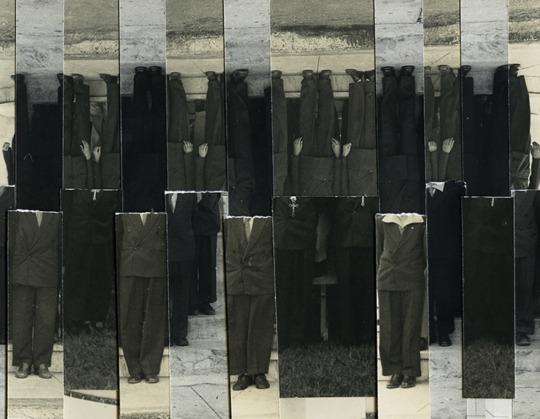
Ricardo Miguel Hernandez, from When the memory turns into dust
4. The Artist Intervenes: Ricardo Miguel Hernandez:
0 notes
Text
"Between order and chaos lies the silent hum of transformation—layers dissolving, forms reassembling, a rhythm just beyond perception. To stand on the brink of evolution is to surrender to the inevitability of becoming."
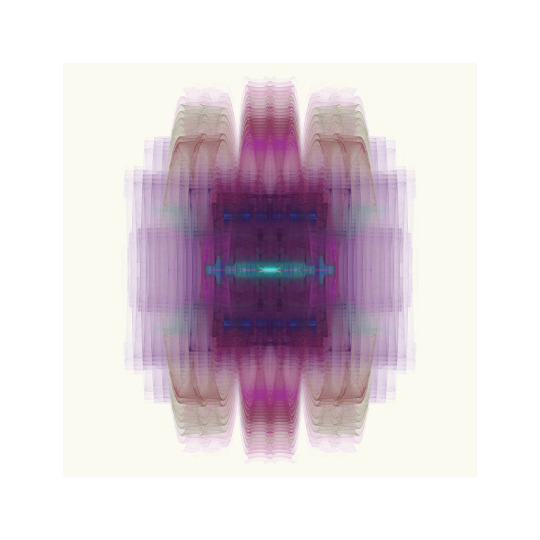
This artwork is called “Brink of Evolution”, and it aligns profoundly with Hexagram 53: 漸 (Jiàn) – Gradual Progress. The symmetrical layering of forms, like the slow accumulation of experience, suggests a process that is deliberate yet inevitable. Colours bleed into each other, mirroring the way true change unfolds—not through abrupt shifts, but through quiet persistence. Evolution is not a single moment but a series of subtle transformations, each layering upon the last.
Jiàn speaks to the wisdom of steady growth. Like the tree that stretches upward year by year, its roots deepening as its branches expand, this artwork reflects a state of continuous refinement. The delicate transparency of the layers hints at the unseen forces shaping progress—discipline, patience, and the quiet assurance that even the smallest movement forward matters. The central axis glows with a contained energy, a reminder that true transformation radiates from within.
Hexagram 53 is formed by the trigrams 巽 (Xùn) – Wind above 艮 (Gèn) – Mountain. The wind moves steadily over the mountain, shaping it imperceptibly over time. This is the essence of gradual progress—change that is lasting because it is measured.
Jiàn, often translated as "Gradual Development" or "Advancement," symbolises a process that cannot be rushed. It is the migration of the wild goose, moving steadily toward its destination. It is the slow unfolding of wisdom, the patient shaping of skill, the tempered growth of a relationship built on trust. In this hexagram, there is no forceful push forward, no reckless leap into the unknown. Instead, there is the quiet confidence of steady momentum, the kind of progress that withstands time because it was never hurried.
At its core, this hexagram teaches that sustainable growth is rooted in patience.
The wind does not erode the mountain in a single gust; rather, it carves its path over centuries, a testament to persistence. Jiàn is a reminder that true evolution does not come from sudden revolutions, but from the slow, deliberate shaping of the self.
To follow the wisdom of Jiàn is to embrace patience as a form of strength. There is power in restraint, in allowing things to unfold at their natural pace rather than forcing an outcome. Those who walk this path understand that every step matters, that every small act of discipline and care accumulates into something greater. It is the artist who refines their craft over decades, the seeker who absorbs wisdom through quiet study, the leader who builds trust through consistent integrity.
To ignore this wisdom, on the other hand, is to grasp impatiently for results without laying the proper foundation. It is to abandon a project midway because the rewards are not immediate, to rush into decisions that lack depth, to seek transformation without enduring the process that makes it real. Such haste leads not to true evolution, but to collapse. The mountain is not shaped by sudden violence, but by the persistent touch of the wind.
Jiàn teaches that progress is not measured by speed, but by depth. The wise do not fear slow growth; they understand that what is built with care will stand, while what is forced will crumble.
To honour this hexagram is to trust the process, to cultivate patience, and to recognise that true evolution is always happening—quietly, steadily, inevitably.
The Art Print “Brink of Evolution” is available as a digital download (personal + commercial license) @behance
1 note
·
View note
Text
Symmetry Experimentation 3
A while ago a saw this creator on tiktok who created these pieces of collage artwork using the scanner on a printer.
I loved how these looked so wanted to give it a go myself…
PRINTER SCANS
initial scans
to begin with I took images I had previously collected and printed out for my mood boards on Klecksography, psychology and symmetry in nature and used these as my starting point. So I just played around with moving the images around, layering them to get the distorted images below.



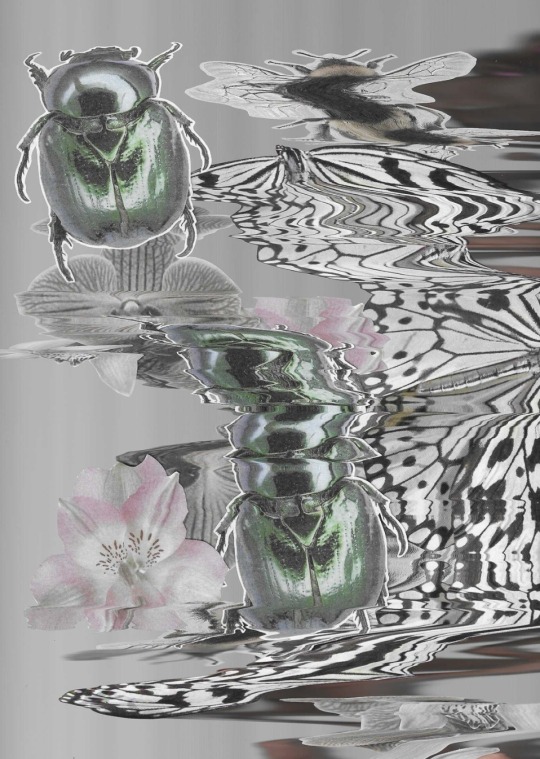
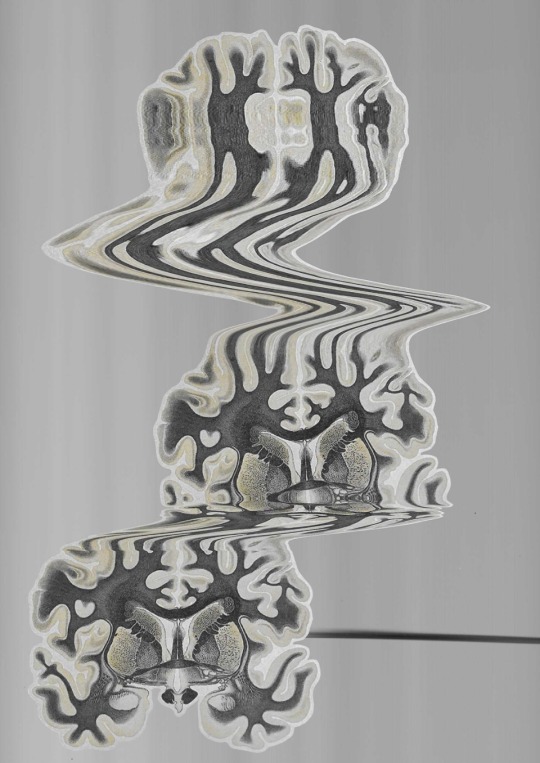




I had also done some quick doodles inspired by art nouveau so tried these out as well.


mirrored
Once I had all my images scanned in, using a digital editing app I mirrored all my initial scans to create the symmetrical design I wanted.







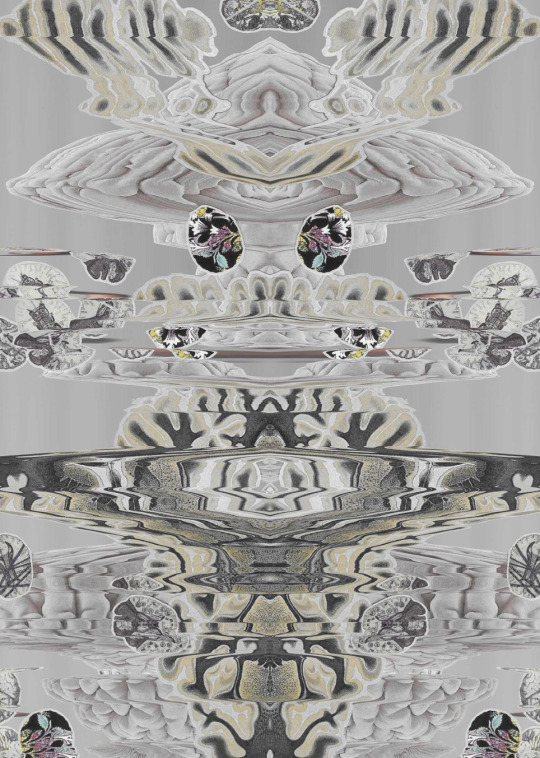


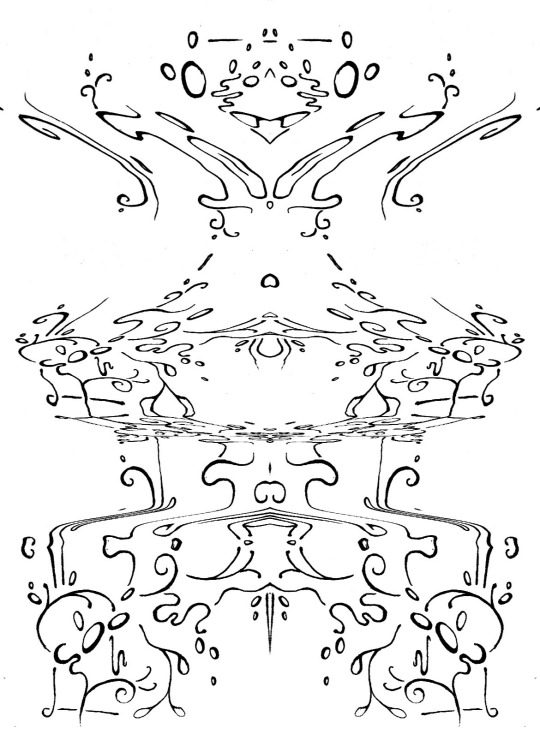
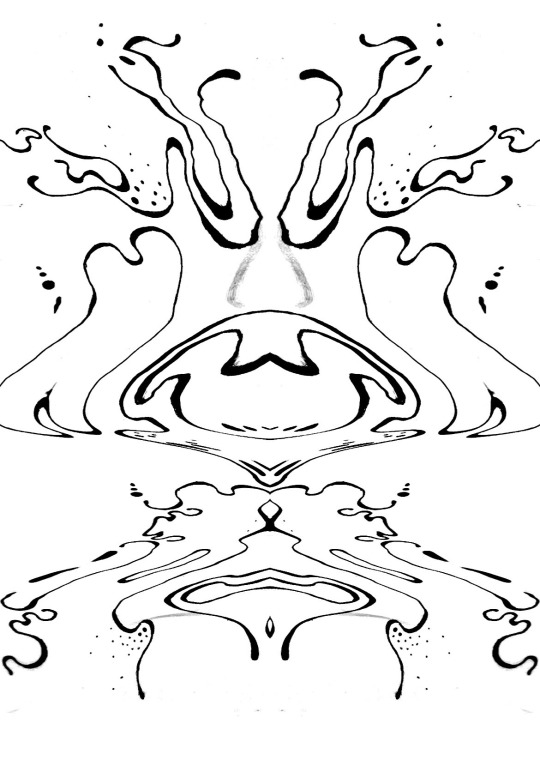
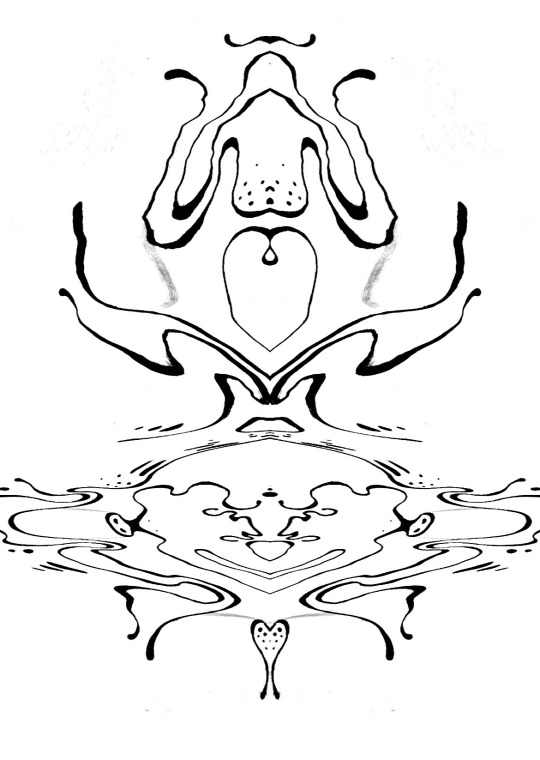
I really like how these turned out, I think they capture this textured and detailed essence I was going for and I think they reflecting of the image adds that extra depth and also shows that clear think to the theme of my project.

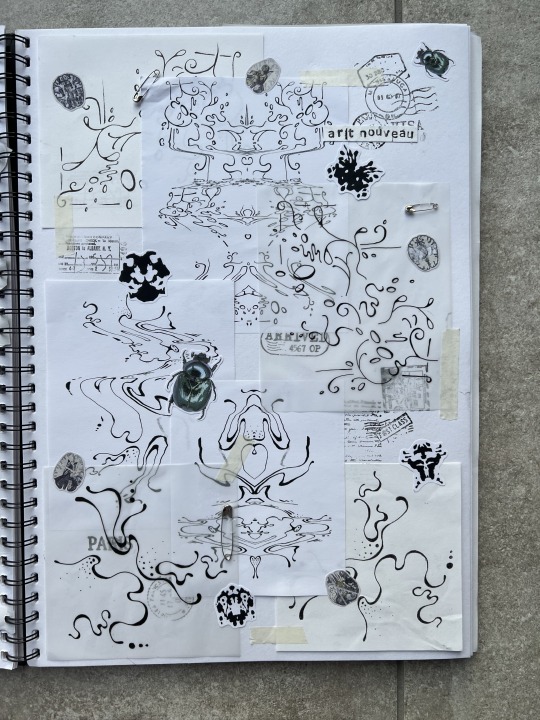
0 notes
Text
home interior design,
home interior design,
Home interior design is more than just arranging furniture and choosing color schemes; it is an art that reflects personality, functionality, and aesthetics. A well-designed home not only enhances visual appeal but also improves comfort and functionality, creating a harmonious living environment. Whether you are redesigning a single room or revamping your entire home, understanding key design principles can help you achieve a stylish and cohesive look.
Understanding Interior Design Principles
1. Balance and Harmony
Balance in interior design ensures that visual weight is evenly distributed within a space. This can be achieved through symmetrical, asymmetrical, or radial balance, depending on the desired aesthetic. Harmony, on the other hand, ties different elements together to create a unified and pleasing look.
2. Color and Lighting
Colors play a crucial role in setting the mood of a room. Warm tones like reds and oranges evoke energy, while cool tones like blues and greens create a calming effect. Lighting further enhances the ambiance by highlighting focal points and influencing how colors are perceived. A combination of natural light, task lighting, and accent lighting can significantly impact a room’s atmosphere.
3. Space Utilization
Maximizing space is essential, especially in smaller homes. Using multifunctional furniture, clever storage solutions, and open layouts can make spaces feel more expansive and efficient. Decluttering and strategic furniture placement also contribute to an organized and visually appealing interior.
4. Texture and Patterns
Textures and patterns add depth and personality to a space. Mixing materials like wood, metal, glass, and fabric creates visual interest and enhances tactile experiences. Patterns in wallpapers, rugs, or upholstery can introduce a unique character to the design.
Popular Interior Design Styles
1. Modern Minimalism
Characterized by clean lines, neutral color palettes, and uncluttered spaces, modern minimalism emphasizes simplicity and functionality. The use of sleek furniture and ample natural light creates an airy and elegant feel.
2. Traditional Elegance
Inspired by classic European decor, traditional interior design features rich wood finishes, intricate details, and luxurious fabrics. This style exudes warmth and sophistication, often incorporating antique or vintage elements.
3. Contemporary Chic
A blend of modern and classic elements, contemporary design focuses on sleek aesthetics with bold accents. It embraces open spaces, innovative lighting, and a mix of textures for a dynamic and stylish appeal.
4. Bohemian Eclectic
Bohemian interiors embrace creativity with vibrant colors, layered textiles, and an assortment of decor pieces. This free-spirited style often combines different cultural influences, vintage finds, and handmade items.
5. Scandinavian Simplicity
Scandinavian design is known for its functionality, simplicity, and connection to nature. With a neutral color palette, wooden accents, and cozy textiles, this style creates a warm and inviting ambiance.
Tips for a Successful Interior Design Project
Define Your Style: Understanding your personal preferences helps in making cohesive design choices.
Plan Before You Buy: Sketch layouts and consider proportions before purchasing furniture and decor.
Invest in Quality Pieces: Durable and timeless furniture can elevate your home’s aesthetic and longevity.
Use Mirrors to Enhance Space: Strategically placed mirrors can create an illusion of a larger space and amplify natural light.
Personalize with Decor: Artwork, plants, and accessories bring character and uniqueness to a room.
Experiment with Textures: Layering different materials adds depth and richness to the design.
Final Thoughts
Home interior design is a powerful way to express individuality while creating a comfortable and stylish space. By incorporating key design principles and staying true to personal tastes, anyone can transform their home into a beautiful and functional haven. Whether opting for minimalism, traditional elegance, or an eclectic mix, the right design approach will always enhance the quality of living and make a house truly feel like home.
0 notes
Text
The Importance of Professional Picture and Mirror Hanging Services
When it comes to decorating your home or office, few things can make as much of an impact as well-placed pictures and mirrors. They not only enhance the aesthetics of a space but also add a personal touch that reflects your style and personality. However, hanging these items correctly can be a tricky task, which is why professional picture and mirror hanging services are invaluable.
First, let’s talk about why picture and mirror hanging is more than just a simple task of putting a nail in the wall. If you’ve ever tried hanging a picture frame or mirror yourself, you probably know that the process isn’t always as straightforward as it seems. You may have faced issues such as crooked frames, holes in the wrong spots, or even worse, damaged walls. Properly installing pictures and mirrors requires the right tools, precise measurements, and a good understanding of wall types to ensure that your valuable items are hung securely.
One of the most important reasons to hire a professional is safety. Mirrors, especially large ones, can be heavy and delicate. If not hung correctly, they can fall and break, causing potential harm. Similarly, improperly mounted pictures can fall, potentially damaging the frame, the wall, or anything in its path. A professional picture and mirror hanging service ensures that everything is securely fastened, reducing the risk of accidents.
Another benefit of professional hanging services is the expertise they bring to the table. Experts in this field have years of experience and know exactly how to assess your space. They’ll consider things like the weight of the object, the wall material, and the right type of hanging hardware, all of which play a crucial role in ensuring that everything stays in place. Whether you're working with drywall, concrete, or plaster, these professionals have the skills to hang your artwork or mirrors in the most effective way possible.
Many people also struggle with the positioning of their artwork or mirrors. It can be difficult to figure out the right height and alignment, especially when you want everything to be symmetrically placed or centered in a particular way. Professionals are trained to help with these aesthetic decisions, so your pieces will be displayed in the best possible way. Whether it’s creating a gallery wall or positioning a mirror to reflect light, they can advise on the most visually pleasing arrangement.
Moreover, professional services can save you time and hassle. Instead of spending hours measuring, leveling, and drilling, you can let someone else take care of all the heavy lifting. This is especially helpful if you have several items to hang or if you’re moving into a new space and need everything organized quickly.
Now, if you’re looking for a reliable, expert service in the Wylie, TX area, Specialized Repair Services is the perfect solution for your picture and mirror hanging needs. Their team of professionals has the experience, skills, and tools to hang all types of pictures and mirrors, from small frames to large, heavy mirrors. Whether it’s a single picture or an entire gallery wall, they will ensure everything is perfectly aligned and securely fastened.
One of the standout features of Specialized Repair Services is their attention to detail. They understand that the smallest mistake can affect the look of your space, and they’re committed to providing high-quality workmanship with every project. Plus, their team is efficient, so you won’t have to worry about spending the whole day waiting for your items to be hung.
In conclusion, professional picture and mirror hanging services are more than just a luxury—they are a smart and safe choice. If you want your artwork and mirrors displayed perfectly, without the stress and hassle, it’s time to call in the experts. Specialized Repair Services in Wylie, TX, is here to help make your space look its best, with expert picture and mirror hanging that is both secure and aesthetically pleasing. Don’t leave it to chance—let the professionals handle it!
0 notes
Text
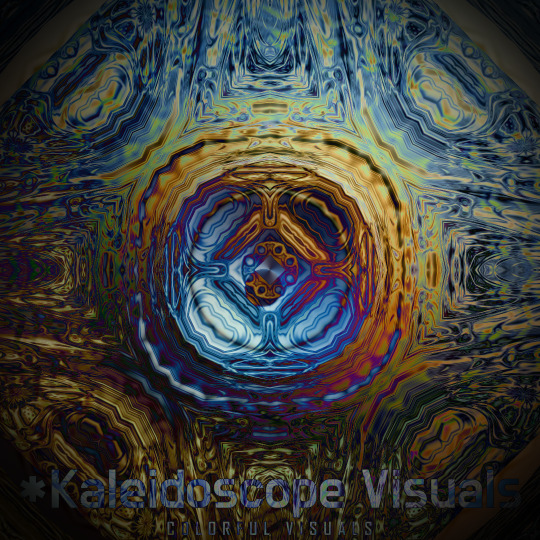
📌 Kaleidoscope Visuals
Luxurious Classicism Kaleidoscope
Luxurious classicism is a style of design that combines the timeless elegance of classical architecture with the luxurious materials and finishes of the modern world. It is a style that is both refined and understated, yet also opulent and inviting.
The key elements of luxurious classicism style include:
Clean lines and simple forms: Luxurious classicism designs are often characterized by clean lines and simple forms. This gives them a sense of timeless elegance that is not easily dated.
High-quality materials: Luxurious classicism designs use only the highest-quality materials, such as marble, granite, and silk. This ensures that they will last for generations to come.
Rich colors and textures: Luxurious classicism designs often feature rich colors and textures. This adds a touch of luxury and opulence to the space.
Intricate details: Luxurious classicism designs often feature intricate details, such as carved moldings, inlaid wood floors, and hand-painted murals. These details add a touch of sophistication and refinement to the space.
#pattern#geometric#symmetric#kaleidoscope#kaleidoscope visuals#colorful#rainbow#texture#glow#iridescent#abstract#modern art#colour#geometry#mandala#art#artwork#digital art#original art#design#aesthetic#万華鏡#万華鏡アート#symmetricart#kaleidoscopevisuals#abstractart#luxurious classicism kaleidoscope art#luxurious classicism#Reflection Symmetrical Artwork Project#Reflection Symmetrical Art
0 notes
Text
Virtual Sketchbook 2
JOURNALING
1. Balance
Definition (in my words): Balance is how visual weight is spread across a work so it feels stable.
Example: Leonardo da Vinci’s The Last Supper shows symmetrical balance. Jesus is placed in the center with equal numbers of apostles on each side, creating a balanced, harmonious composition.
2. Contrast
Definition: Contrast is the difference between elements, like dark vs. light, rough vs. smooth, to make things stand out.
Example: A black-and-white photo where a bright white object pops against a dark background.
3. Emphasis
Definition: Emphasis is when an artist draws your eye to a certain part of the artwork.
Example: A red stop sign stands out on a gray street because of color emphasis.
4. Rhythm
Definition: Rhythm is a sense of movement created by repeating elements like lines or shapes.
Example: Rows of windows on a tall building create a visual rhythm.
5. Unity
Definition: Unity means all parts of the artwork feel like they belong together.
Example: A painting where all colors come from the same soft color palette creates harmony.
6. Variety
Definition: Variety is using different elements (colors, shapes, textures) to keep things interesting.
Example: A mixed bouquet of flowers with many colors and shapes creates visual variety.
WRITING & LOOKING
Chosen Artwork: Tuning the Samisen by Katsushika Hokusai (Figure 6.23)
Delicate linework gives the figure a graceful, flowing quality, emphasizing the brush drawing technique.
Implied movement is captured in the woman’s bent body and raised arm, showing the action of tuning the instrument.
Negative space (the empty background) keeps the viewer’s focus fully on the subject.
Organic shapes formed by the folds of the robe create visual rhythm and balance.
Limited color palette highlights form and texture rather than distracting with color.
Expressive gesture in the lines conveys emotion, connecting the viewer to the quiet, intimate moment.
CONNECTING ART TO YOUR WORLD
Color has always affected me emotionally. Bright, saturated hues like yellow and orange lift my mood, while low value blues and grays can make me feel calm or sometimes extremely sad. I remember walking into a room painted deep red. The intense saturation felt overwhelming, almost like the walls were closing in. If I had to pick a color scheme for my life, I’d choose a mix of light blues and greens because they feel peaceful, balanced, and fresh.
ART PROJECT
For my painting, I created a canvas divided in half. On the left side, I painted a blooming jasmine flower using a bright, warm color scheme to symbolize hope, growth, and joy. On the right side, I painted a withering jasmine flower using a cool, muted color palette to represent sadness, loss, and fading energy. The split design reflects the contrast in my emotions, showing how I often feel torn between light and dark moods, yet both sides are part of the same whole.
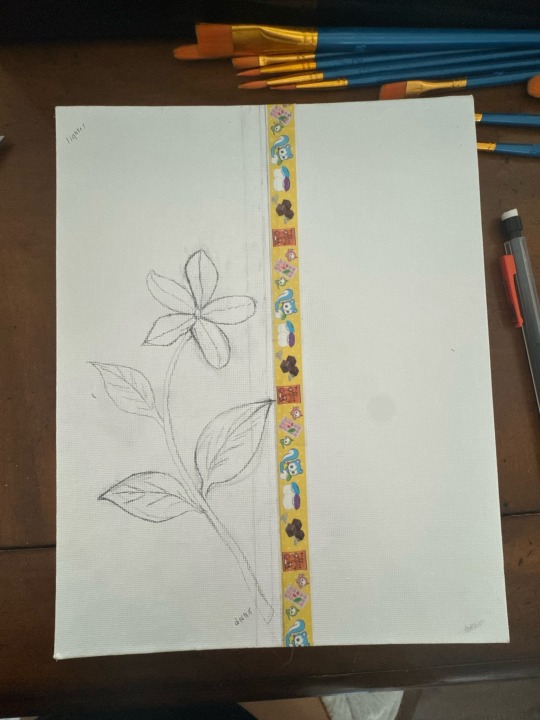

0 notes
Text
Of Symmetry in Psychology and Art.
Finding creative inspiration in connections between the Arts and Science through the concept of symmetry.
In GEOMETRY, a shape is symmetric when it can be divided into two or more identical pieces. Usually, ‘symmetry’ refers more precisely to reflectional symmetry (or mirror symmetry); however, the concept of symmetry in geometry is more nuanced, such that a triskelion can be said to had three fold rotational symmetry.
The GESTALT PSYCHOLOGY OF PERCEPTION is a psychological theory which emphasises that the whole of anything is greater than its parts, The observer’s nervous system and experience don’t register physical input in a piecemeal way.
According to the Law of Symmetry, bilateral symmetry is one of the key factors in perceptual grouping, When we see two unconnected elements that are symmetrical, we unconsciously integrate them into one coherent object.
In design, symmetry is used to create balance, engagement, and functional and conceptual connections between elements of the image.
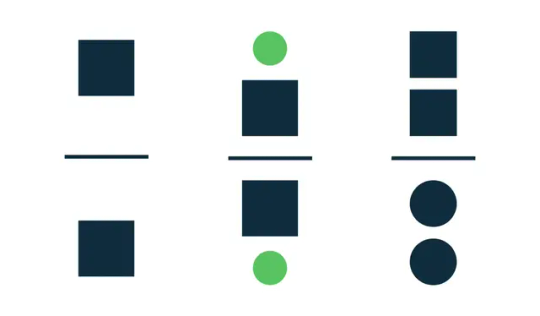

The RORSCHACH INK BLOT TEST is a 1921 projective psychological test in which the subject’s perceptions of inkblots (klecksographies) are recorded, analysed and interpreted.
It is meant to analyse the particulars of a singular person’s approach to perception. the approach to the identification of the image was the true goal of the test, instead of the subject’s final answer. In time, patterns in the approaches to identification emerged, making of the of test a diagnostic tool.
The test entered popular culture and began being used inappropriately, plummeting its reputation within the medical community, where it is considered unreliable at best. Although the test has been administered extensively, the relationships between psyche and interpretation have never been empirically tested. The perception of the inkblots and its analysis by the psychologist may also be unreliable and subjective, other than varying greatly based on culture.

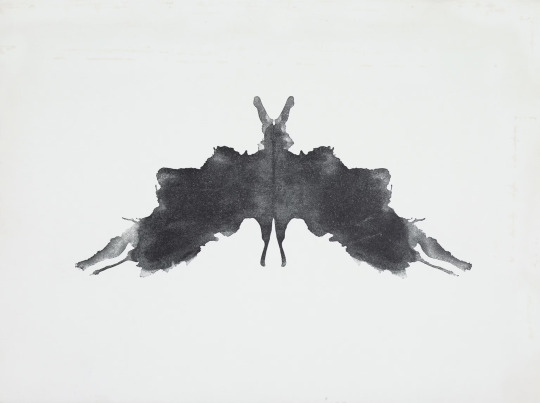
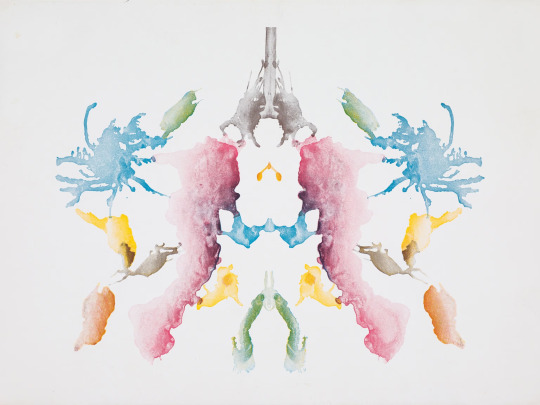
HERTA OTTOLENGHI WEDEKIND was a polymath artist from the first half of the 1900s. Wedekind patented in 1921 a design process based on klecksographies for her abstractly decorated textile art. Her works (tapestries and clothing, woven and embroidered) are often symmetrical.
‘Casualty and process come together [in a very similar way to] what Paul Klee would describe in The Thinking Eye. In this volume, the painter celebrates the birth of the pictorial form without resorting to nature and mimesis’ (Herta Ottolenghi Wedekind. The Dream of Total Artwork. Giulia Gomiero, Elena Lago, Sabrina Spinazzè).






0 notes
Text
Unleash Creativity with a Meme Maker Online: Crafting Memes with Ease
In the age of social media and digital communication, memes have become a ubiquitous form of expression, humor, and cultural commentary. Harnessing the power of a Image Resizer Tool Online not only simplifies the creation process but also empowers users to engage audiences with witty and impactful visual content. This guide explores the functionalities and benefits of using a free online meme maker, alongside insights into utilizing a mirror image online tool for creative projects.
The Evolution of Memes in Digital Culture
Memes, often consisting of images paired with humorous or relatable text, have revolutionized online communication. They serve as viral content that spreads rapidly across social media platforms, fostering community engagement and sparking conversations. A meme maker online provides users with the tools to generate, customize, and share memes effortlessly, catering to a diverse range of creative expressions and audience preferences.
Exploring the Features of a Free Online Meme Maker
A free online meme maker offers intuitive features designed to facilitate meme creation for users of all skill levels. Whether you're a seasoned meme enthusiast or a novice experimenting with visual storytelling, these tools typically provide a library of templates, text options, and editing capabilities. Users can upload their own images or select from a curated collection to personalize memes according to their unique style and message.

Enhancing Engagement through Multiple Picture Meme Generator
Advanced meme makers include functionalities such as a Resize Image Tool Online, enabling users to combine multiple images into cohesive meme formats. This feature is particularly useful for creating meme series, comparative visuals, or storytelling narratives that resonate with diverse audiences. The ability to juxtapose images enhances comedic timing and thematic depth within meme content.
Creative Freedom with Free Online Meme Maker
The accessibility of a free online meme maker promotes creative freedom by allowing users to experiment with various meme formats, themes, and visual elements. From classic image macros to trending meme templates, these tools empower users to customize text, colors, and layouts to reflect current events, pop culture references, or personal anecdotes with a touch of humor.
Utilizing Mirror Image Online Tool for Visual Symmetry
In addition to meme creation, an online mirror image tool serves as a versatile resource for artists, designers, and photographers seeking to explore visual symmetry and artistic expression. This tool allows users to mirror and rotate images freely, creating captivating compositions, reflective patterns, or surreal visual effects that add depth and intrigue to digital artworks.
Practical Applications of Mirror Image Tool
The mirror image tool is instrumental in product photography, where symmetrical reflections enhance product presentations and showcase design details effectively. Artists use this tool to create mirrored artworks that play with perception and perspective, while designers incorporate mirrored elements into logos, posters, and graphic compositions for enhanced visual impact.
Streamlining Workflow with Free Mirror Image Online
The availability of a free mirror image online tool streamlines workflow for creative projects, eliminating the need for complex software installations or manual editing processes. Users can mirror images horizontally or vertically, rotate them to desired angles, and preview changes in real-time before saving or sharing final compositions. This efficiency saves time and enhances productivity in visual content creation.
Embracing Innovation in Visual Communication
The integration of a meme maker online and mirror image tool exemplifies innovation in visual communication, catering to diverse creative needs and audience preferences in digital content creation. Whether crafting memes that resonate with online communities or experimenting with mirrored visuals that inspire curiosity and engagement, these tools empower users to embrace creativity and storytelling in dynamic and impactful ways.
Choosing the Right Tools for Creative Projects
When selecting a meme maker online or mirror image tool, consider factors such as user interface intuitiveness, customization options, supported file formats, and compatibility with mobile devices. User reviews and tutorials provide valuable insights into the functionality and reliability of different tools, aiding in informed decision-making for optimizing creative workflows and achieving desired visual outcomes.
Conclusion: Empowering Creativity and Engagement
In conclusion, leveraging the capabilities of a meme maker online and mirror image tool enhances creativity, engagement, and visual storytelling across digital platforms. Whether creating memes that entertain and resonate or exploring mirrored images that captivate and inspire, these tools facilitate seamless creation, customization, and sharing of compelling visual content. Embrace the versatility and accessibility of free online tools to unleash your creativity, spark conversations, and leave a lasting impression in the ever-evolving landscape of digital culture and communication.
0 notes
Text
Week 02: Sunday – Reflection and Production
On the final few days of the week, I worked on enhancing the details of the spider by finding more stamps and using the research from Wednesday to achieve the desired result. The body felt too flat and uninteresting despite the details I had added previously, so I wanted to add even finer details. Therefore, I manually added pores and lumps to convey their infectious nature and used the stamps I had found to add wrinkles and lines where the skin stretched. I wasn't able to continue much more on the work however, I was content that I was able to complete the body leaving the rest of my time to begin sculpting the legs.
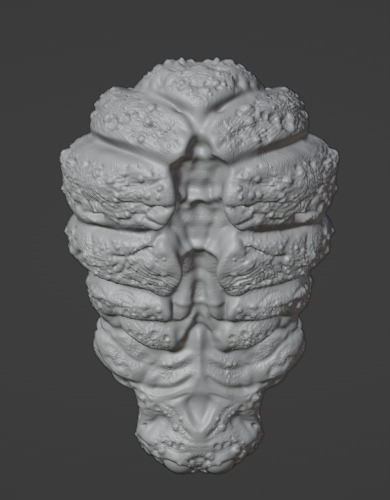

Feedback After completing this week's work, I posted my current progress online, seeking potential feedback. One individual mentioned defining and adding details around the gaps, as some areas seemed too smooth or even untouched. They suggested ensuring I touch up these parts to maintain the flow with the rest of the model's design. Another person commented specifically on the side profile, who also noticed the lack of detail in the indents, which looks odd compared to the heavy detailing of the rest of the body. They also pointed out that everything is too symmetrical and recommended adding details on one side to make it look more natural and organic. Personal Reflection This week has been a significant learning experience with many retries in an attempt to achieve the desired look. Due to my inexperience with realism, this is taking a lot of time; however, it is expanding my knowledge, which can always be applied to stylized artwork as well. This process also tests my workflow and flexibility, which has been working well and very smoothly compared to previous projects where I had to depend on older saves to redo parts. I haven’t updated my progress much within my group and haven’t received much feedback. I need to update more often so I can ensure my model aligns with the group's needs for their project before progressing further. Despite this, I believe I have made good progress and learned a lot while balancing this project with two other projects and keeping up to date with the Gantt chart.
Gantt Chart
Light Red highlights marks the day
This is in place to keep me on track what has been or needs to be done this day of the week.

0 notes
Text
interior decorating,
interior decorating,
Interior Decorating: Transforming Spaces with Style and Function
Interior decorating is the art and science of enhancing the interior of a space to create a more aesthetically pleasing and functional environment. Whether you're designing a home, office, or commercial space, interior decorating focuses on selecting color schemes, furniture, fabrics, lighting, and accessories that harmonize with the purpose of the room and the needs of its occupants.
The Basics of Interior Decorating
The foundation of any successful interior decorating project lies in understanding the principles of design. These include balance, contrast, rhythm, scale, and proportion. By applying these principles, decorators create spaces that are visually appealing and comfortable.
Balance: Balance refers to the distribution of visual weight in a room. This can be achieved symmetrically (both sides of the room are identical) or asymmetrically (different but balanced elements).
Contrast: Contrast adds interest and variety. By using different colors, textures, and patterns, you can create a dynamic space that keeps the eye engaged.
Rhythm: Rhythm involves creating patterns or repetitive elements, such as color, texture, or shapes, that lead the viewer’s eye across the room. This could include the repetition of certain materials or a visual pathway.
Scale and Proportion: These principles are essential in making sure that the furniture and decor fit well within the size of the room. Overly large furniture in a small room can create a sense of discomfort, while tiny furniture in a large space may feel out of place.
The Key Elements of Interior Decorating
Color: Color plays a central role in interior decorating. The color scheme you choose can influence the mood of a room and affect how spacious or cozy it feels. Light colors such as whites and pastels can make a space feel airy and open, while darker tones like navy or charcoal create warmth and intimacy.
Furniture: The furniture you choose should not only reflect your style but also fit the size of the room. Consider both function and comfort when selecting furniture. Pieces should be arranged to promote ease of movement and encourage conversation or relaxation, depending on the purpose of the room.
Lighting: Lighting can make or break a room. It should complement the design of the space while being functional. A combination of ambient, task, and accent lighting ensures that the room is well-lit and comfortable at all times of the day. Consider using natural light, pendant lights, lamps, and strategically placed sconces to create atmosphere.
Textures and Materials: Mixing different textures—like soft textiles, smooth leather, and rough wood—adds depth and interest to a room. The materials you select for furniture, flooring, and decor should reflect the room’s purpose and the overall aesthetic. For example, a living room might use plush velvet cushions, whereas a kitchen may feature sleek granite countertops.
Accessories: Accessories like artwork, rugs, throw pillows, and vases can be used to inject personality into a space. They also serve to unify different elements of the room. It’s important not to over-accessorize, though—too many objects can clutter a space, making it feel chaotic instead of relaxing.
Current Trends in Interior Decorating
Interior decorating trends evolve over time, but certain styles continue to dominate. In 2024, several trends have gained traction:
Sustainable Design: Eco-friendly materials and energy-efficient products are increasingly popular. Consumers are opting for sustainable furniture, natural fibers, and energy-saving lighting options.
Biophilic Design: This trend involves bringing the outdoors inside. Plants, natural materials like wood, and large windows that allow for maximum natural light are used to create calming, nature-inspired spaces.
Minimalism: Less is more, with clean lines, neutral colors, and functional design taking center stage. This approach reduces clutter and focuses on the essentials, making spaces feel more organized and tranquil.
Vintage and Retro: Many interior decorators are leaning into nostalgia, incorporating vintage furniture, accessories, and bold patterns that reflect past decades, especially the mid-20th century.
Multifunctional Spaces: With the rise of remote work and hybrid lifestyles, people are looking for ways to maximize the functionality of their spaces. Furniture that serves more than one purpose, such as foldable desks or convertible sofas, has become highly sought after.
Interior Decorating for Different Spaces
Living Room: The living room is often the heart of the home, where family and friends gather. A cozy yet functional design is key, with comfortable seating, a focal point (such as a fireplace or art piece), and space for movement. Soft textures, soothing colors, and good lighting create a welcoming atmosphere.
Kitchen: In a kitchen, functionality is paramount. High-quality appliances, plenty of counter space, and smart storage solutions are essential. The design should blend form and function, with beautiful cabinets, sleek countertops, and efficient lighting.
Bedroom: The bedroom should be a sanctuary, promoting relaxation and restful sleep. Comfort is the top priority, with soft linens, comfortable furniture, and warm lighting. Neutral or calming tones help create a peaceful environment.
Home Office: As remote work becomes increasingly common, home offices are being designed for productivity. Ergonomic furniture, good lighting, and a clutter-free space are essential for creating an inspiring and efficient workspace.
Conclusion
Interior decorating is an exciting process that allows individuals to express their personalities and create spaces that are both beautiful and functional. By understanding design principles, choosing the right elements, and staying in tune with current trends, you can transform any space into a true reflection of your style and needs. Whether you are decorating a small apartment or a spacious home, the right design can enhance your daily living experience and create a welcoming atmosphere for everyone who enters.
4o mini
0 notes
Text
The Art and Science of Interior Design: Transforming Spaces into Experiences

Interior design is more than just arranging furniture and picking out paint colors; it's a delicate balance of art and science that transforms spaces into functional and aesthetically pleasing environments. This article delves into the fascinating world of interior design, exploring its history, principles, and the role of an interior designer.
A Brief History of Interior Design
The origins of interior design can be traced back to ancient civilizations. The Egyptians were known for their richly decorated homes, adorned with murals, textiles, and intricately carved furniture. The Greeks and Romans further advanced interior design by emphasizing architectural elements such as columns, arches, and mosaics.
During the Renaissance, interior design evolved to reflect the changing tastes and cultural shifts of the time. This period saw a renewed interest in art, leading to the creation of luxurious and ornate interiors. Fast forward to the 19th and 20th centuries, where movements such as Art Nouveau, Bauhaus, and Mid-Century Modernism revolutionized the field with their emphasis on form, function, and simplicity.
The Principles of Interior Design
Modern interior design is governed by several core principles that ensure spaces are both beautiful and functional:
Balance: Achieving a sense of equilibrium by distributing visual weight evenly. This can be symmetrical, asymmetrical, or radial.
Rhythm: Creating a sense of movement through repetition, progression, transition, and contrast.
Harmony: Ensuring that all design elements work together cohesively to create a unified look.
Proportion and Scale: Relating the size of objects to each other and to the space as a whole.
Emphasis: Creating a focal point to draw attention to a specific area or element within the space.
The Role of an Interior Designer
An interior designer's role is multifaceted, requiring a blend of creativity, technical knowledge, and communication skills. Here are some key responsibilities:
Space Planning: Designers must understand how to optimize the layout of a space to enhance functionality and flow.
Material Selection: Choosing appropriate materials and finishes that align with the client's aesthetic and functional needs.
Color Theory: Utilizing color to influence mood, perception, and harmony within a space.
Lighting Design: Crafting a lighting plan that enhances the ambiance and functionality of a space.
Furniture and Decor: Selecting furniture, artwork, and accessories that complement the overall design vision.
Project Management: Overseeing the entire design process from concept to completion, including budgeting, scheduling, and coordinating with contractors and suppliers.
The Impact of Interior Design
Interior design has a profound impact on our daily lives, influencing our moods, behaviors, and even our health. Well-designed spaces can improve productivity in workplaces, foster relaxation in homes, and enhance the overall experience in public areas like hotels, restaurants, and retail stores.
Moreover, interior design plays a crucial role in sustainability. Designers are increasingly incorporating eco-friendly materials and practices into their projects, promoting energy efficiency, and reducing waste. This not only benefits the environment but also creates healthier living and working spaces.
Conclusion
Interior design is a dynamic and ever-evolving field that merges creativity with practicality. It requires a deep understanding of design principles, a keen eye for detail, and the ability to translate a client's vision into reality. As our lives and needs continue to change, so too will the world of interior design, constantly pushing the boundaries of what is possible in creating beautiful, functional, and sustainable spaces.
PRIYANKA ENTERPRISES | modular kitchen price
0 notes
Text
Top 10 Pooja Room Design Ideas for 2024
In the realm of interior design, the sacred space of a pooja room holds a special significance. It serves as the nucleus of spiritual energy within a home, where one can connect with divine forces and seek solace. As we step into 2024, the trends in pooja room design continue to evolve, blending tradition with modern aesthetics. Whether you're embarking on a new home project or seeking to revamp your existing pooja room, here are the top 10 pooja room design ideas for 2024 that seamlessly integrate functionality with elegance.
Minimalistic Marvels:
In 2024, minimalistic pooja room designs are gaining traction for their simplicity and tranquility. Opt for clean lines, clutter-free surfaces, and neutral color palettes to create a serene ambiance. Incorporate hidden storage solutions to keep religious artifacts neatly organized, allowing the focus to remain on spiritual pursuits.
Fusion of Tradition and Technology:
Embrace the fusion of tradition and technology by integrating smart features into your pooja room design. Install adjustable lighting systems, automated curtains, and sound systems to enhance the worship experience. Incorporate digital frames or screens for displaying religious artwork or mantra chants, adding a contemporary touch to the sacred space.
Nature-inspired Sanctuaries:
Bring the outdoors inside by infusing nature-inspired elements into your pooja room design. Incorporate natural materials such as wood, stone, and bamboo to create a rustic yet elegant ambiance. Adorn the space with lush greenery, aromatic flowers, and cascading water features to evoke a sense of serenity and connection with the elements.
Space-saving Solutions:
For smaller homes or apartments, maximize space utilization with innovative top 10 pooja room design ideas solutions. Consider integrating foldable or sliding doors to create a compact yet functional pooja corner. Utilize vertical wall space for installing floating shelves or cabinets to display religious artifacts and idols, optimizing every inch of available space.
Artistic Accents:
Infuse artistic flair into your pooja room design with handcrafted accents and intricate detailing. Incorporate custom-made stained glass windows, intricate wood carvings, or hand-painted murals depicting religious motifs to add a touch of cultural richness to the space. Invest in artisanal craftsmanship to create a pooja room that reflects your unique aesthetic sensibilities.
Sacred Symmetry:
Create a sense of harmony and balance in your pooja room design by embracing the principles of sacred geometry. Opt for symmetrical layouts, geometric patterns, and mandala-inspired motifs to imbue the space with positive energy and spiritual resonance. Choose furniture and decor elements that adhere to geometric proportions, fostering a sense of alignment and equilibrium.
Multi-functional Designs:
Incorporate multi-functional top 10 pooja room design ideas that serve as versatile spaces for meditation, yoga, or contemplation. Install built-in seating with storage compartments beneath for meditation cushions or yoga mats. Incorporate movable partitions or screens to transform the space into a private retreat for spiritual practices while maintaining flexibility for other activities.
Illuminated Elegance:
Illuminate your pooja room design with elegant lighting fixtures that enhance the sacred atmosphere. Opt for soft, diffused lighting to create a warm and inviting ambiance conducive to prayer and meditation. Install pendant lights, wall sconces, or recessed lighting to highlight focal points such as idols, religious artwork, or sacred scriptures, adding depth and dimension to the space.
Reflective Serenity:
Incorporate reflective surfaces into your pooja room design to amplify natural light and create a sense of expansiveness. Install mirrors strategically to visually enlarge the space and reflect positive energy throughout the room. Choose mirrored accents such as mosaic tiles, mirrored panels, or mirrored furniture to infuse a sense of luminosity and serenity into the sacred space.
Personalized Sanctuaries:
Above all, personalize your pooja room design to reflect your spiritual beliefs, cultural heritage, and personal preferences. Incorporate heirloom artifacts, family photographs, or cherished mementos that hold sentimental value. Create a shrine dedicated to your chosen deity or spiritual guide, adorned with offerings and symbols of devotion that resonate with your soul.
In conclusion, the top 10 pooja room design ideas for 2024, curated by DezinePro, encompass a harmonious blend of tradition, innovation, and individual expression. Whether you prefer a minimalist aesthetic, a nature-inspired sanctuary, or a fusion of tradition and technology, our expert designers at DezinePro offer endless possibilities to create a sacred space that nurtures the spirit and elevates the soul. Embrace these design concepts to transform your pooja room into a haven of peace, tranquility, and divine connection. Let DezinePro help you enrich your home and life with spiritual abundance through our bespoke design services tailored to your unique vision.
This version emphasizes DezinePro's role in providing expert design services, positioning the company as the go-to source for creating personalized and spiritually enriching pooja rooms.
0 notes